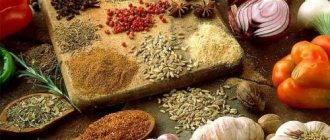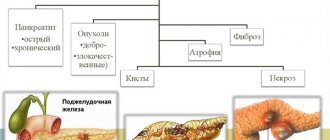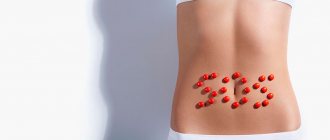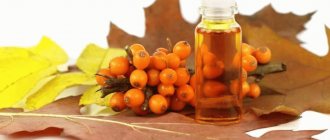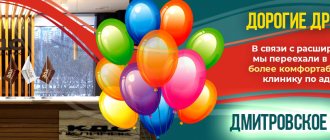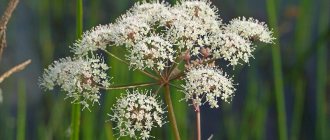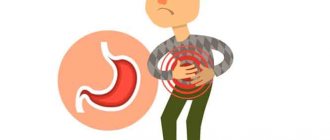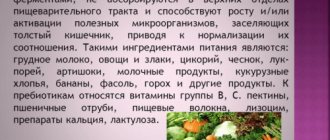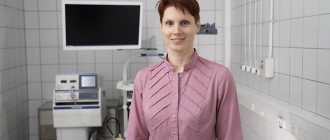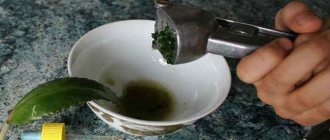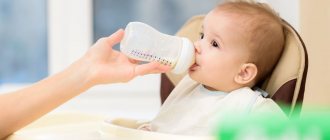Cholecystitis is an inflammation of the gallbladder, accompanied by a violation of the outflow of bile. Gallstone disease, gallbladder dyskinesia, pathogenic bacteria and viruses, lamblia and roundworms can provoke such inflammation.
Treatment depends on the phase of the disease and is aimed at restoring normal functioning of the gallbladder and reducing inflammation. If treatment is not started on time, the inflammatory process will spread to adjacent organs.
Our expert will tell you in more detail about the most recommended and effective methods of treating cholecystitis: therapeutic nutrition, pharmacological agents, herbal medicine, physiotherapy, spa treatment and special physical education. These methods may help prevent the development of gallstones.
Diet therapy
This is the first and simplest method of correcting exacerbations of cholecystitis. The basic rules of nutrition for cholecystitis are as follows:
- split meals 5-6 times a day and unlimited fluid intake;
- mandatory breakfast and a light dinner 2-3 hours before bedtime.
This diet normalizes the flow of bile and leads to normal cholesterol metabolism.
The main diet is dietary table No. 5.
| Excluded: | Allowed: | Limited: |
| fried food | oatmeal and buckwheat porridge | legumes |
| butter | wheat and rye bread (yesterday's) | salt |
| smoked meats | lean meat | fresh fruits |
| fish and mushroom broths | steam cutlets | sweets |
| salo | boiled fish | cabbage |
| fat meat | cereal soups, milk soups | vegetable oil |
| sausages | broths are not strong | rich pastries |
| egg yolks | Vegetarian cabbage soup, borscht | |
| pickled products | cottage cheese, kefir, mild cheese | |
| alcoholic drinks | boiled and baked vegetables | |
| strong tea and coffee | cracker | |
| ice cream | vegetable juices | |
| chocolate | compotes, jelly, rosehip decoction | |
| confectionery | ||
| spices |
Dishes are steamed, boiled or baked. It is recommended to take food warm.
A therapeutic diet is not a panacea for cholecystitis, and only in combination with physiotherapeutic and drug treatment does it normalize the functioning of all digestive organs and the liver.
It is important
Three symptoms of chronic cholecystitis in adults
Causes of chronic cholecystitis
Chronic cholecystitis is based on opportunistic microflora:
- staphylococci,
- streptococci,
- Escherichia,
- Pseudomonas aeruginosa,
- enterococci
Sometimes the cause may be bacterial pathogenic microflora, in particular salmonella, shigella, protozoal or viral infection. There are three main ways for microbes to enter the body:
- hematogenous,
- contact,
- lymphatic.
Parasites also provoke cholecystitis. Damage to giardiasis, opisthorchiasis, ascariasis, fascioliasis, strongyloidosis. These parasites lead to partial obstruction of the bile duct. Ascariasis provokes a cholangiogenic process, fascioliasis leads to cholangitis, and with giardiasis the function of the bile ducts is impaired.
Cholecystitis always begins with disturbances in the outflow of bile. It stagnates, in connection with this, cholelithiasis, GIVP, which are the immediate precursors of chronic cholecystitis, can develop. But there is also a reverse movement of this process. Due to chronic cholecystitis, pancreatic motility slows down, bile stagnation develops, and stone formation increases.
In the development of this pathology, nutritional disorders play an important role. If a person eats large portions with significant intervals between meals, if he gorges himself at night, eats fatty, spicy foods, or eats a lot of meat, then he is at risk for developing cholecystitis. He may develop a spasm of the sphincter of Oddi, and bile stagnation may occur.
Medicines for cholecystitis
Only after an accurate diagnosis has been established, a gastroenterologist recommends comprehensive drug treatment. Taking medications relieves pain and eliminates symptoms of the disease.
Antispasmodics
Duspatalin. Photo: market.yandex.ru
This group of drugs helps to relax the spasmodic smooth muscles of the digestive organs.
To eliminate biliary dyskinesia and spastic pain, and reduce dyspeptic symptoms, the following are prescribed: Duspatalin, Neobutin, Sparex, Trimedat, Odeston.
Antispasmodics are taken 30-40 minutes before meals and drunk for 14-21 days.
show more
Antibiotics
Cefixime. Photo: market.yandex.ru
The basis of drug treatment of chronic cholecystitis is anti-inflammatory therapy. To achieve the best effect, antibiotics are combined with the use of pre- and probiotics.
Which antibiotic the doctor will prescribe depends on the cause of the disease and clinical manifestations.
Most often, gastroenterologists prescribe: Cefixime, Ceftriaxone, Amoxicillin, Clarithromycin.
The course of antibiotic therapy lasts from 10 to 14 days.
Treatment of the disease
General principles of therapy:
- taking antibiotics;
- diet;
- physiotherapy;
- symptomatic therapy to alleviate the general condition.
In the chronic form of cholecystitis, treatment can be not only medicinal, but also surgical. Complex drug therapy includes the following groups of drugs:
- choleretic;
- antibiotics;
- digestive enzymes;
- prokinetics;
- non-steroidal anti-inflammatory drugs;
- antispasmodics;
- lacto- and bifidobacteria.
Surgical treatment is used when acute inflammation cannot be relieved with medications. In this case, the affected part of the gallbladder is removed.
Spa treatment and balneotherapy
Sanatorium treatment is an important stage in the recovery of patients with diseases of the digestive system.
The effect of treatment outside the acute stage at a resort is higher than in a hospital. Natural healing factors (climate therapy, mineral waters, baths, mud therapy, therapeutic nutrition and physical exercise) have a beneficial effect on the functional state of the nervous system and bile secretion mechanisms, help restore immunity, normalize metabolism, and have an anti-inflammatory effect.
Balneotherapy - treatment with mineral waters - is a proven and effective method that corrects disorders of the digestive system.
When prescribing mineral waters, the state of the secretory function of the stomach must be taken into account. Bottled mineral waters are also successfully used - Essentuki, Slavyanovskaya, Smirnovskaya, Nagutskaya, Stelmas, Psyzh and others.
Essentuki. Photo: market.yandex.ru
Rinse the cup with hot water, then pour 1/3 glass of mineral water and slowly take it warm 25-40 minutes before meals.
On the recommendation of a gastroenterologist, tubage can be performed with mineral water with the addition of 20–25 g of xylitol or 1/2 teaspoon of Carlsbad salt. Mineral water is drunk in courses of 15-30 days.
show more
Postoperative period
Features of the recovery period after surgery are determined by the technique of its implementation. With laparoscopic intervention it is relatively easy. After just 6 hours you can sit down on the bed and gradually get up under the supervision of medical staff. The next day you can safely move around the department. As for food, they begin to eat light food on the second day after cholecystectomy. The drainage can be removed on the same day. On average, recovery takes about a month, but the time frame may increase depending on the general condition of the patient. Open surgeries sometimes require longer bed rest and pain relief.
Phytotherapy
Herbal medicine for chronic acalculous cholecystitis can enhance the therapeutic effect of medications.
Medicinal plants are used in the form of infusions and decoctions, which gently, safely, and naturally improve bile secretion and have a beneficial effect in inflammatory diseases of the liver and gall bladder.
The following have a valuable effect on cholecystitis:
- sandy immortelle flowers,
- corn silk,
- peppermint herb,
- tansy flowers,
- elecampane root
- centaury grass,
- dandelion root,
- common yarrow herb,
- wild chicory root,
- dog-rose fruit,
- caraway seed,
- fragrant dill seed,
- lemon balm herb.
Herbal infusions and decoctions will help enhance the effect of medications. Photo: Pixabay
Freshly prepared infusions and decoctions are used ½ cup 30-40 minutes before meals. It is advisable to repeat herbal medicine courses 3 times a year, the duration of one course is from 30 days.
For the best effect, during herbal medicine for gallbladder diseases, it is recommended to give up coffee and strong tea.
show more
Dyspeptic syndrome
With cholecystitis, dyspeptic syndrome often manifests itself. It makes itself felt by a bitter taste in the mouth and regular bitter belching. This is accompanied by unpleasant sensations of a bloated abdomen, stools are disturbed, and the intestines are distended. Sometimes it starts to feel nauseous, and there may be bitter vomiting. If the gallbladder is in a state of atony or hypotension, then after vomiting relief may occur: relief of heaviness, reduction of pain.
If dyskinesia is hypertensive in nature, then vomiting only makes it worse and the pain becomes stronger. By the amount of bile in the vomit, you can determine the degree of bile stagnation. Its quantity directly depends on this. The greater the stagnation, the more bile there will be in the vomit.
Vomiting occurs after strong experiences, against the background of eating prohibited foods, or due to physical overload.
External lithotripsy
Using external shock wave lithotripsy, soft and small (up to 2.0 cm) stones can be crushed. The procedure is virtually painless, does not require anesthesia, you do not have to walk around with drains and worry about the healing of endoscopic or standard incisions.
Good to know
6 methods for treating gallstone disease in adults
For patients undergoing this procedure, surgical care must remain available for several months, since fragments of broken stone may take a long time to come out. For large stones or pathological changes in the gallbladder itself, the doctor recommends removing the gallbladder.
Diagnostic methods
Diagnosis begins with a visit to a gastroenterologist, who collects an anamnesis of the disease and life, and examines the patient. Further laboratory tests are prescribed:
- general urine analysis;
- several blood tests:
- biochemical;
- for sugar;
- for cholesterol;
- for pancreatic amylase;
- for antibodies to parasites;
- clinical.
- stool tests - coprogram, for antibodies to parasites.
To clarify the diagnosis and identify possible concomitant pathologies, the gastroenterologist may prescribe additional examinations:
- Ultrasound of the abdominal cavity;
- ECG;
- ERCP (endoscopic technique);
- MRI or CT with contrast;
- bilioscintigraphy;
- endoscopic ultrasound;
- duodenal intubation;
- bile culture;
- X-ray of the abdominal organs.
Surgery for cholecystitis
The only indication for emergency surgery within the next few hours from the moment the patient is admitted to the hospital is diffuse biliary peritonitis.
The majority of patients are operated on as planned after acute inflammatory phenomena have subsided. Because each subsequent attack can cause the development of acute cholecystitis with severe complications from the liver and pancreas.
Currently, most operations are performed endoscopically and are much easier for patients to tolerate. This minimally invasive technique has significantly reduced mortality and the number of postoperative complications.
The use of enzyme preparations in postcholicystectomy syndrome
In some cases, PCES may be accompanied by disorders of the digestive system. This is due to the fact that food intake becomes a signal for the production of bile and pancreatic enzymes. If the signal does not arrive or arrives intermittently, subsequent events are also disrupted. As a result, food is not processed properly, and the body does not receive enough nutrients. This can affect the general condition of the body and manifest itself as heaviness after eating, discomfort, bloating or diarrhea.
Enzyme preparations have been developed to support digestion; they deliver enzymes from the outside to compensate for their lack in the body. The flagship among such drugs is Creon®.
The drug is available in the form of capsules containing hundreds of small particles - minimicrospheres. They do not exceed 2 mm in size, which is recorded as recommended in world and Russian scientific works9,10. The small particle size allows Creon® to recreate the digestive process as it was intended in the body, and thereby cope with unpleasant symptoms. Dosages of the drug are usually selected by a doctor, however, in accordance with modern recommendations, the starting dosage is considered to be 25,000 units10.
To learn more
An important stage in the treatment of PCES is enzyme therapy, because In many cases of PCES, pancreatic function is impaired and enzyme deficiency occurs11. Because of this, digestive problems arise, manifested in the form of unpleasant symptoms such as abdominal pain, heaviness in the stomach, flatulence and diarrhea. In addition, the lack of enzymes affects the quality absorption of nutrients: the body does not receive the necessary vitamins and minerals.
Creon® is a modern enzyme preparation that replenishes the deficiency of its own enzymes and promotes better absorption of food and improved digestion. More information about the drug can be found here.
Popular questions and answers
Our expert Elena Nilova , drawing on more than thirty years of experience in medicine, answered the most common questions.
Why does cholecystitis occur?
The occurrence of the disease is promoted by: ● disruption of the outflow of bile with damage to the mucous membrane of the bladder, ● volvulus of the gallbladder and bending of its neck, ● reflux of pancreatic enzymes, ● pinching of a stone in the neck of the bladder.
Acute inflammation of the gallbladder occurs when an infection enters the gallbladder (Escherichia coli, Pseudomonas aeruginosa, staphylococcus, enterococcus, etc.).
How to stop an attack of cholecystitis before the ambulance arrives?
If you feel a paroxysmal dull aching pain in the right side of the abdomen right under the ribs, then you need to lie down in a comfortable position, after drinking sodium chloride mineral water without gas, and apply a cold compress to this area.
Is it possible to treat cholecystitis with folk remedies?
It can be treated, but it cannot be cured. Long-term treatment with herbs alone can lead to an exacerbation of the chronic inflammatory process and the activation of infection in the gallbladder. Traditional recipes can be used as an auxiliary therapy and only on the advice and under the supervision of a doctor.
Is it possible to cure cholecystitis forever?
Considering the variety of factors and complex mechanisms of development of biliary tract pathology, we can say for sure that if you undergo patient, long-term and consistent treatment, it is only possible to exclude exacerbations of cholecystitis. And if there is a genetic predisposition, then you will have to be constantly attentive to the state of the gastrointestinal tract.
How to avoid gallbladder inflammation?
Primary prevention of cholecystitis includes maintaining a healthy lifestyle, limiting alcohol intake and eliminating bad habits such as smoking and overeating.
It is imperative to lead an active lifestyle, undergo regular medical examinations, and avoid stressful situations. These rules seem easy to follow. But worldwide there is a steady increase in the number of gastrointestinal diseases. And every year the number of gall bladder operations and the number of postoperative complications are growing. Correct assessment of clinical symptoms, the use of modern diagnostics and the prescription of complex treatment can prevent the development of pathological processes in the digestive organs.
Symptoms of the disease
The first sign of cholecystitis is pain on the right under the ribs, which can radiate to the arm or under the shoulder blade. They are relieved by analgesics, but return when the medicine stops working.
Other signs of the disease:
- loss of appetite;
- indigestion;
- gas formation;
- chills;
- constant belching and nausea;
- yellowness of the skin.
Symptoms may appear separately or several at the same time. The manifestations of chronic and acute cholecystitis differ.
Signs of chronic cholecystitis:
- yellowness of the skin;
- pain and heaviness in the right hypochondrium, scapula, side;
- lack of appetite, vomiting, nausea that does not go away;
- bitterness in the mouth, constant belching.
Symptoms of an acute attack of cholecystitis:
- sudden weakness;
- bitterness in the mouth;
- sharp pain on the right;
- yellowing of the skin;
- increased heart rate, decreased blood pressure;
- a person cannot take a comfortable position;
- vomiting immediately after eating.
What is forbidden to do during an attack
Do not self-medicate, this can lead to more serious consequences.
Sometimes, out of ignorance, relatives or the patient himself cause harm instead of helping. To avoid such a situation, you should remember what not to do:
- Take analgesics, otherwise the clinical picture of the disease will be distorted. Due to painkillers, you can “miss” a perforation of the gallbladder wall, requiring immediate surgical intervention.
- Apply a hot heating pad to the sore spot: heating will aggravate the inflammation and increase the risk of purulent complications.
- Use choleretic pharmaceuticals and medicinal herbs.
- Give an enema.
Folk remedies for calculous cholecystitis
Treatment with folk remedies for calculous cholecystitis involves using medicinal herbs yourself at home.
Additionally, you need to follow a diet - table No. 5, completely eliminate alcohol from your life.
When the stones in the gallbladder are large in size, purulent cholangitis, empyema have begun, and severe pain is present, then alternative medicine is not used, only surgical intervention will help the patient.
Infusions with herbs
To treat inflammation in the gallbladder, they resort to the help of medicinal plants, which provide a pronounced choleretic effect. Herbs help - oregano, yarrow, knotweed, mint. Sage, lemon balm, and horsetail are used in the collections.
Recipes:
- Grind immortelle flowers, add stigmas and St. John's wort inflorescences (all in equal quantities). Boil the liquid (250 ml), add 10 g of the mixture. Keep on low heat for 40 minutes, after which the “medicine” should be cooled. Be sure to filter. Drink 2/3 glass 2-3 times a day. It is better to consume the infusion 25 minutes before meals.
- Infusion with the addition of St. John's wort leaves and flowers. It is necessary to add a tablespoon of dried plant to 250 ml. Leave in a sealed container for 2 hours, then filter. Use in a dosage of 70 ml, 4 times.
In both cases, the duration of the treatment course is 14 days. If the patient is taking any medications, a doctor's consultation is required. The recipes have a pronounced anti-inflammatory and choleretic effect.
Mint will help cure calculous cholecystitis. It has anti-inflammatory properties and promotes choleretic action. Mint tea is prepared from the plant. Add 2 tablespoons of peppermint to a liter of water and leave for 15 minutes. Drink like tea. The dosage per day for an adult is 500-700 ml.
Infusions in the form of fees:
| Composition of an unconventional product | Method of preparation and administration |
| Sage + peppermint + yarrow (equal amounts) | Add 40 g of the collection to 800 ml of hot liquid, leave for 120 minutes, filter. Drink 120 ml three times a day. Reception does not depend on food, the course of treatment is 10 days. |
| Melissa + horsetail + St. John's wort (50 grams each) | Add 70 g of components to a liter of water and leave for 24 hours. Filter. The container is stored in the refrigerator. Drink 30 ml 4 times a day. The “medicine” must be taken every day for a week and a half. |
Folk remedies based on medicinal plants are safe. If negative symptoms appear or your health worsens, it is recommended to reconsider therapy.
Treatment with oats
Calculous cholecystitis is treated with oats. A decoction and infusion are prepared based on the component. For treatment, oats are purchased in the form of unrefined grains.
Unrefined grains are washed well under running water. After 1 kg of grains, pour cold water and leave for 24 hours in a dark place. After 24 hours, the water is drained and the oats are dried. Using a coffee grinder, grind to a powder. Store the powder in a paper bag or cotton bag.
Decoction recipe: add a teaspoon of powder to 200 ml of water, simmer over low heat for 30 minutes, cool. No filtering needed. Drink on an empty stomach. Take once a day, preferably in the morning. Treatment lasts until you feel better.
Preparation of the infusion: you need to pour 1 glass of oats with a liter of water, simmer until ¼ of the liquid remains. After cooling, filter. Take 50 ml 4 times a day.
Seeds + oil + honey
At home, you can prepare a “medicine” based on pumpkin seeds (crushed into powder), butter and vegetable oil and natural honey. All ingredients, 100 g each. Mix, simmer over low heat, and after boiling, remove the container from the heat. Let cool.
Add 100 g of alcohol to the cold broth, mix well. Store on the bottom shelf of the refrigerator. Take once a day, the dosage is a tablespoon. Treatment lasts 21 days.
Getting rid of colic using traditional methods
For frequent attacks of calculous cholecystitis, it is recommended to drink grapefruit juice on an empty stomach. Drink 250 ml once a day.
Rowan juice has a good healing effect. It relieves inflammation, has a choleretic effect, and prevents the formation of stones. Rowan berries are washed, doused with boiling water, ground, and the juice is squeezed out. Drink medicinal liquid 3 times a day, 30-40 ml.
Black radish has a positive effect on the gallbladder. Grate the vegetable, squeeze out the juice, drink 60 ml up to 4 times.
